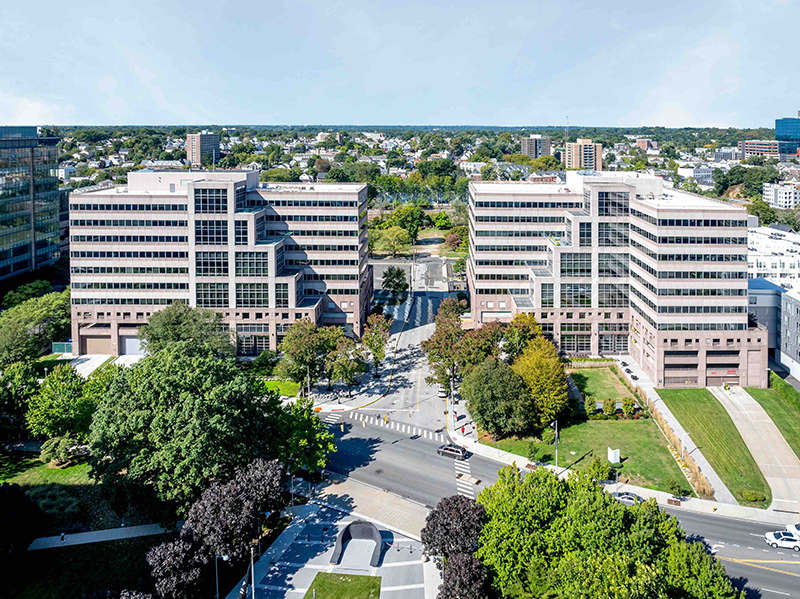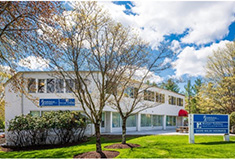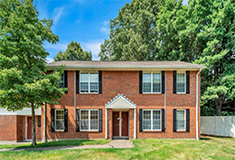News:
Connecticut
Posted: May 16, 2013
The healing and educational properties of outdoor spaces
Good site design of educational and health care use projects is vital to the creation of a sense of place and the definition of clear understanding of where you are. Site design which allows the resident, visitor and employees to have direct contact with nature is known to provide significant and profound benefits to all those who spend their day in these designed landscapes.
Educational and healthcare landscapes require the same site design fundamentals - access, parking, entry to buildings, and use of outdoor spaces. The preferred design elements include the preservation of large trees; the creation of shaded access walks; the separation of pedestrian traffic from faster and noisier auto traffic; the definition of the front entry and the creation of private spaces for the staff. But, it is the use of nature as part of the entry sequence and design of outdoor spaces where these project types have the most to offer the people who use them.
Outdoor educational spaces can provide a place for fun, encourage physical and cognitive activity, enhance the learning environment, provide for hands-on activities and allow students to encounter the changes of the their world caused by time and nature. The design opportunities are about so much more than just games and sports. How many of us have memories of the great oak at your school growing up? Or watching water slowly draining out of the nearby wetlands? But there is more- the school bus drop off area becomes a study in geometry, the pavers become a study in style and color. The entry sequence defines how a person understands the welcome they are being offered on a subconscious level - does it seem friendly? Is it cold and uninviting? All these designed elements begin to establish the vocabulary of aesthetics.
"We can't underestimate the value of the aesthetic development promoted by being outside. Aesthetic awareness refers to a heightened sensitivity to the beauty around us. Because the natural world is filled with beautiful sights, sounds, and textures, it's the perfect resource for the development of aesthetics in young children." - Article entitled: "Take it Outside!" by author Rae Pica from the website "Early Childhood News."
Design for educational landscapes must be age appropriate as well, engaging the collegiate intellect while addressing the stress of college life is more complicated than it sounds. College students are affected by the landscape around them even though they are rarely aware of the actual surroundings. The college campus is a great opportunity to include botanical exhibits as well as studies on behavior and aesthetics. Our work to redesign the fundamental core at Central Connecticut State University is a great example - here the campus core was completely redesigned to create a slice of nature in the Central Oval with its fountains and grassy hill right in the middle of campus.
Site design for healthcare has similar needs and opportunities. According to research sited in The Center for Health Design White Paper entitled, "The influence of Nature on Design of the Environment of Care," - "Patients who are in direct or sensual contact with nature have demonstrated higher thresholds of pain...and interaction with nature in chronic and terminal patients yields higher levels of quality of life...visitor stress is reduced...and positive distractions may be understood as "environmental design elements that effectively promote restoration from stress in patients, visitors and healthcare staff (Ulrich1992)"
Site design for healthcare has the potential as therapeutic design from the moment you enter the site. Parking and entry design should provide for the needs of those who are a little slower, a little more physically inconvenienced and emotionally stressed. How many times have we been to the hospital and felt that you had no idea where you were going?
Healthcare also provides for unique opportunities for designers to create small gardens intended to sooth and de-stress. Alzheimer's centers and hospice care use unique design guidelines to help accommodate patients who are not always aware of their limitations. Patients, families and staff are constantly dealing with potentially catastrophic news and have a need for places close by where they can find emotional balance. Often these are provided in the original site design stage but not finalized until the donor list is refined and money becomes available but they provide a remarkable way to offer hope and comfort in a designed space filled with the sweet sound of water surrounded by lush living plants. Our work at the Manchester Hospital Cancer Center is a good example of the use of a mix of plants, water and sunshine.
Terri-Ann Hahn, ASLA, CPESC, CPSWQ, LEED AP is a principal of LADA, P.C. - Land Planners, Simsbury, Conn.
Tags:
Connecticut
MORE FROM Connecticut
CBRE brokers sale of Stamford Towers - 326,468 s/f Class A office
Stamford, CT The CBRE team of Jeff Dunne, Steve Bardsley, and Travis Langer, in collaboration with David Block, completed the sale of Stamford Towers, located at 680 & 750 Washington Blvd. CBRE represented the seller, CBRE Investment Management, and procured the buyer, a joint venture of Lamar Companies











.png)